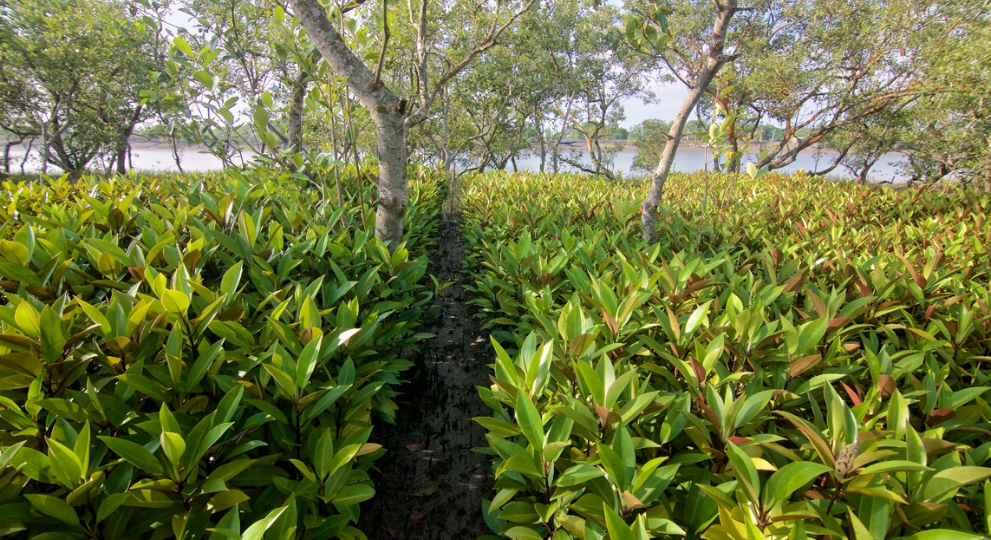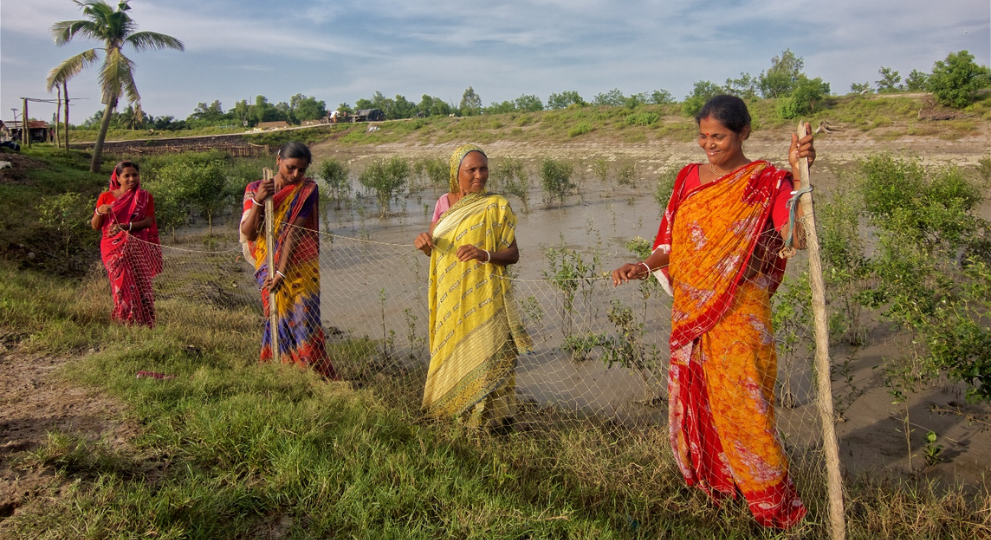
From Roots to Canopy: Rejuvenating the Sundarbans with Mangroves
Change Initiatives (CI), with support from Schneider Electric India Foundation (SEIF) took up a special project “Plant Mangroves, Rebuild Sundarbans. The project has achieved a remarkable feat, planting over 2.65 lakh mangroves in past two years (2021–2024) at the three villages of Chotomollakhali Gram Panchayat, Gosaba block, and One Village Nazat Gram Panchayat, Sandeshkhali -I block West Bengal, India. This endeavor goes beyond the mere act of planting trees; it encompasses a holistic approach to protect these vital ecosystems, create environmental impact, and transform rural lives for the better.
Sundarbans, Mangroves and Climate Change:
The Sundarbans, a tidal wetland situated at the confluence of the Ganges, Brahmaputra, and Meghna rivers, is a true ecological marvel. This UNESCO-recognized World Heritage Site, spanning over 9,600 square kilometers across India and Bangladesh, is home to an astounding array of biodiversity, with over 2,626 faunal and 1,400 floral species (Rahman & Asaduzzaman, 2013). The region's extensive mangrove forests, covering an area of 1,200 square kilometers, are the world's largest, playing a vital role in mitigating the effects of climate change. These mangrove ecosystems act as powerful carbon sinks, absorbing substantial amounts of CO2 from the atmosphere and contributing significantly to reducing global warming. (Ortolano et al., 2016) Beyond their climate change mitigation capabilities, the Sundarbans' mangrove forests serve as natural shields, protecting coastlines from erosion, storm surges, and preserving the delicate balance of the ecosystem.
The Sundarbans' unique estuarine ecosystem supports a diverse aquatic life, including commercially important fisheries resources. The region's mangroves enhance water quality, filter pollutants, and provide a wide range of ecosystem services that directly or indirectly sustain the livelihoods of nearly 10 million people. However, the Sundarbans' fragile ecosystem faces numerous threats, including over-fishing, habitat degradation, and the impacts of climate change. As sea levels rise and salinity increases, the mangrove forests and the biodiversity they support are under immense pressure. (Neogi et al., 2017)
Recognizing the critical importance of the Sundarbans, efforts have been made to institute comprehensive management systems and promote sustainable resource use.

Collaboration and Community Engagement:
The success of the mangrove restoration initiative in the region can be largely attributed to the collaborative efforts of various stakeholders. The SEIF and Change Initiatives, the Planning from Change Initiatives team, and the local SHG Cluster, Sobujsathi Sangha, and Maa Saroda Women & Rural Welfare Society have all played crucial role in this endeavor. Together, they have worked tirelessly to plant and protect the mangrove saplings, ensuring their survival and growth. This collective effort has not only fostered the growth of the mangrove forest but has also instilled a sense of ownership and responsibility within the community (Pringgenies et al., 2021).

The project has become a catalyst for community engagement, empowering the locals and imparting knowledge about the importance of mangroves in combating climate change. This collaborative approach has proven to be an effective strategy, with the restored mangrove forests providing numerous benefits to the local community. The economic feasibility of mangrove restoration has been highlighted, with studies showcasing the potential for improved returns to the society compared to existing land use practices. Furthermore, the restoration efforts have had positive impacts on the socioeconomic landscape of the community, with mangrove-based resources providing a new source of income. (Pringgenies et al., 2021)
A concern for protection and survival:
The mangrove saplings, fragile as they are in their early lifecycle, need protection from outside interferences. Cattle and goats that graze pose a serious threat to their survival. After the planting, Change Initiatives continued its efforts. It is assured that nets are used to safeguard the saplings, and awareness-raising activities about protecting the seedlings were conducted. local people were roped in to ensure the survival of the mangroves to their maturity.

Transforming Rural Lives:
The impact of the “Plant Mangroves and Rebuild Sundarbans” project extends far beyond environmental conservation. It has brought about positive changes in the lives of the rural communities residing in and around the Sundarbans. The restoration of mangrove ecosystems has safeguarded the habitat of diverse species and created a healthier environment for the locals. The restoration of mangrove ecosystems not only protects the habitat of diverse species but also provides a source of income for the local population.
Future Plans:
The success of the project has inspired even greater ambitions. The SEIF-funded project intends to keep establishing mangroves in the Sundarbans, thereby increasing the area covered by restored ecosystems and the environmental benefits they provide. They work to protect the area’s distinctive biodiversity and provide a robust natural barrier against climate change by expanding the mangrove cover.
Conclusion:
The “Plant Mangroves and Rebuild Sundarbans” initiative is a prime example of responsible environmental management, effective community engagement, and sustainable growth. Mangroves have an undeniable effect on the environment, the prevention of climate change, and rural livelihoods. With every sapling planted, we get a little bit closer to transforming rural lifestyles and building a greener, more resilient future for future generations. Let’s all continue to support and applaud programs that encourage change and protect the environment.

